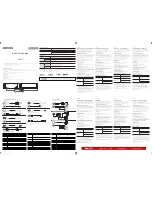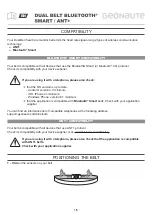
Model GX-82 Instruction Manual
Calibration • 9
Calibration
The GX-82’s microprocessor circuits require only a few user adjustments: combustibles
span, oxygen zero, and H
2
S or CO span. The remaining adjustments are made using the
Auto Zero/Span function.
NOTE: Adjust the GX-82 when a gas reading drifts below zero or a sensor has been
replaced.
Supplies and Equipment
To adjust the GX-82, you will need the following supplies and equipment, available in an
RKI Calibration Kit:
•
Known calibrating samples of combustible gas, H
2
S, and CO. The samples should
have concentrations in approximately the middle of the range of detection.
•
An oxygen-free source, such as pure nitrogen or CO in a nitrogen balance
•
A fixed-flow regulator, non-absorbent tubing, and calibration cup
Calibrating the GX-82
NOTE: Allow adequate time for the GX-82 to respond to changes in adjustment. Adjust
the controls in small increments, then wait approximately 15 seconds for a
response. Clockwise rotation of the control increases the reading.
Ignore alarms during the calibration procedure.
Calibrating the combustibles channel
1. Take the GX-82 to a non-hazardous environment before calibrating.
2. Turn on the GX-82 and allow it to warm-up for five minutes.
3. Adjust the Auto Zero/Span as described in “Normal Operation” on page 6.
4. Remove the battery compartment cover to expose the adjustment controls COMB
SPAN, O
2
ZERO, H
2
S SPAN, and CO SPAN.
CAUTION: The COMB 1.5V control is factory set. Do not change this setting.
5. Use a calibration cup and gas cylinder to expose the combustibles sensor to a
calibrating gas sample. The sample should represent the target gas at a measured
%LEL, mixed with air. (The RKI Calibration Kit is ideal for this application. See kit
instructions for assembly and use.) When using a sample under pressure, allow the
mixture to flow directly over the sensor.
NOTE: The combustible gas sensor is a general hydrocarbon sensor that responds to
most flammable vapors and gases; the response will vary depending upon the
substance. For best results, calibrate the combustible gas sensor to the target gas.
See Appendix B for Relative Response Curves for common gases and vapors.








































